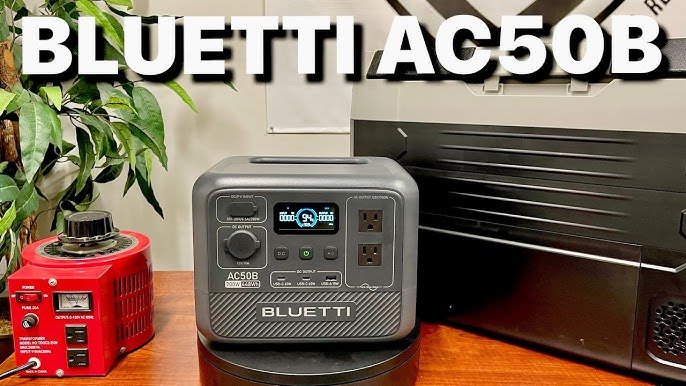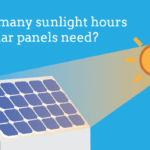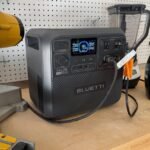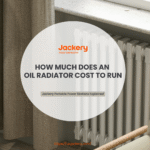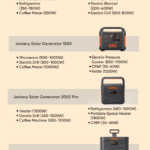Disclosure: This post contains affiliate links and I will be compensated if you make a purchase after clicking through my links. Learn More
NMC and LFP are two popular types of lithium-ion batteries. Both have unique features and benefits.
Choosing between NMC (Nickel Manganese Cobalt) and LFP (Lithium Iron Phosphate) can be challenging. These batteries power many devices, from smartphones to electric cars. Understanding their differences helps in making an informed choice. NMC batteries are known for their high energy density and long life.
LFP batteries, on the other hand, are praised for their safety and durability. Comparing NMC and LFP can help you decide which battery type suits your needs best. In this blog, we will explore the strengths and weaknesses of both NMC and LFP batteries to guide your decision-making process.
Battery Technology Basics
Understanding battery technology is crucial in the modern world. Batteries power everything from small gadgets to electric cars. They store energy efficiently and are vital for renewable energy solutions. Two types of batteries, NMC and LFP, are popular choices. Each offers unique advantages in energy storage.
Types Of Batteries
Different types of batteries serve varied purposes. NMC batteries consist of Nickel, Manganese, and Cobalt. They are known for high energy density and long life. These traits make them suitable for electric vehicles. LFP batteries contain Lithium Iron Phosphate. They are praised for stability and safety. Their robust nature is perfect for stationary energy storage systems.
Importance In Energy Storage
Energy storage is vital for balancing supply and demand. Batteries hold excess energy for later use. This function is crucial for renewable energy sources like solar and wind. NMC batteries offer high capacity, enabling longer use. LFP batteries ensure stable performance over time. Both types play significant roles in reducing energy waste.

Credit: www.mayfield.energy
Nmc Batteries
Nmc batteries are popular in the world of energy storage. They stand for Nickel Manganese Cobalt batteries. Known for their power, they offer a balance of energy and safety. Many industries prefer them for their reliability and versatility.
Composition And Structure
Nmc batteries contain three main components: nickel, manganese, and cobalt. These elements are mixed in varying ratios. This mix affects the battery’s energy capacity and lifespan. Nickel provides high energy, while manganese adds stability. Cobalt helps in maintaining a long life cycle. Together, they create a strong and efficient power source.
Performance Characteristics
Nmc batteries deliver consistent performance over time. Their energy density is high, making them suitable for electric vehicles. They also have a good charge-discharge efficiency. This means they lose less energy during use. The balance of elements ensures safety and reduces overheating risks. Users benefit from longer-lasting power and reliability.
Lfp Batteries
LFP batteries offer greater safety and longer lifespan compared to NMC batteries. NMC batteries, however, provide higher energy density, making them lighter and more suitable for portable applications. Choosing between LFP and NMC depends on specific needs like safety, weight, or energy efficiency.
Lithium iron phosphate (LFP) batteries are gaining popularity for their safety, cost-effectiveness, and longevity. These features make them a strong contender in the world of battery technology. But what exactly sets LFP batteries apart?
Material Composition
LFP batteries use lithium iron phosphate as the cathode material. This composition reduces the risk of overheating and fire.
Unlike other lithium-ion batteries, they don’t contain cobalt. Cobalt is expensive and poses ethical sourcing concerns.
So, with LFP, you get a safer and more sustainable option.
Efficiency And Reliability
LFP batteries are known for their long cycle life. They can handle more charge and discharge cycles compared to other batteries.
This means you don’t need to replace them as often. For instance, electric vehicles (EVs) using LFP batteries can travel longer distances over their lifetime.
You also get consistent performance. They maintain stable voltage and capacity over many cycles, ensuring your devices run smoothly.
So, have you considered how LFP batteries could benefit your applications? Maybe it’s time to give them a closer look.

Credit: troescorp.com
Cost Analysis
Comparing NMC and LFP batteries reveals differences in cost. NMC batteries are more expensive but offer higher energy density. LFP batteries, while cheaper, provide better safety and longer life.
Cost Analysis: NMC Vs LFP
Understanding the cost dynamics of NMC (Nickel Manganese Cobalt) and LFP (Lithium Iron Phosphate) batteries is crucial for making informed decisions. Whether you’re a manufacturer, a tech enthusiast, or someone considering an EV purchase, cost is a primary factor. Let’s dive into the financial aspects of these two popular battery types.
Production Costs
Production costs for NMC batteries are generally higher. This is due to the use of nickel and cobalt, which are expensive materials. The mining and processing of these elements add to the overall cost.
In contrast, LFP batteries utilize lithium and iron, which are more abundant and cheaper. This makes LFP a more cost-effective option. Manufacturers can produce LFP batteries at a lower cost, which can translate to savings for consumers.
However, it’s essential to consider the trade-off. While NMC batteries are more costly to produce, they often offer higher energy density. Is the potential for greater energy worth the extra expense?
Market Prices
Market prices for batteries fluctuate based on demand and raw material costs. NMC batteries often have higher market prices due to their production cost. This can impact the overall price of products like electric vehicles or storage systems.
LFP batteries, on the other hand, tend to be more stable in price. The abundance of materials used in their production helps keep prices competitive. For budget-conscious buyers, this stability can be appealing.
But here’s an interesting twist: as technology advances, the price gap between NMC and LFP is narrowing. Could this shift lead to a change in your battery preference?
When evaluating cost, consider your needs and long-term usage. Are you prioritizing upfront savings, or is performance your main concern? By understanding these cost elements, you can make a decision that aligns with your goals and budget.
Environmental Impact
Lithium-ion batteries power many devices today. Two popular types are NMC (Nickel Manganese Cobalt) and LFP (Lithium Iron Phosphate). Their environmental impact is an important topic. Each type has unique effects on sustainability and recycling.
Sustainability Factors
NMC batteries often require rare metals. Mining these metals impacts the environment. It involves significant land disturbance. Water pollution can occur during extraction. LFP batteries use more abundant materials. They pose less risk to ecosystems. Production processes for LFP are generally cleaner. This makes them more sustainable.
Recycling And Disposal
Recycling is crucial for both battery types. NMC batteries contain valuable metals. Recycling helps reclaim these resources. It reduces the need for new mining. Disposal can be problematic. Improper disposal may lead to soil contamination. LFP batteries are easier to recycle. They have fewer toxic elements. Disposal is safer, reducing environmental harm.
Safety Considerations
NMC batteries offer higher energy density, but careful handling is essential due to safety concerns. LFP batteries are safer, providing stability and resistance to overheating. Choosing between these types involves balancing energy needs and safety priorities.
When choosing between NMC (Nickel Manganese Cobalt) and LFP (Lithium Iron Phosphate) batteries, safety considerations often top the list. Both battery types have their unique safety profiles, and understanding these can help you make a well-informed decision. Let’s dive into the specific safety aspects that differentiate these two battery technologies.
Risk Factors
NMC batteries, known for their high energy density, are not without risks. They can be prone to thermal runaway, a condition where the battery overheats and may catch fire. This is especially a concern if the battery is damaged or improperly charged.
LFP batteries, on the other hand, boast a more stable chemistry. They are less likely to overheat, reducing the risk of fire. However, they typically offer lower energy density, which might not be ideal for all applications.
Have you ever wondered how temperature affects your choice? NMC batteries can be sensitive to high temperatures, which can degrade their performance and lifespan. LFP batteries, while more tolerant to temperature variations, still require proper thermal management.
Safety Enhancements
Manufacturers continuously work on enhancing battery safety. For NMC batteries, innovations like solid electrolytes and advanced cooling systems are being developed to minimize thermal risks.
LFP batteries benefit from their inherent chemical stability, yet companies are still pushing the boundaries. Improvements in battery management systems (BMS) help monitor and control the charge and discharge cycles, ensuring optimal safety.
Consider how these safety enhancements impact your daily life. If you use devices or vehicles powered by NMC batteries, regular maintenance and monitoring are crucial. For LFP batteries, you might enjoy peace of mind with fewer safety-related concerns.
Ultimately, your choice between NMC and LFP may hinge on where you prioritize safety over other factors like energy density or cost. What’s your top priority when it comes to battery safety?
Applications
The world of battery technology is evolving rapidly. NMC and LFP batteries are at the forefront. Each type offers unique benefits suited to specific applications. Understanding these applications helps industries make informed decisions.
Electric Vehicles
Electric vehicles demand efficient and reliable energy storage. NMC batteries offer high energy density. This means longer driving ranges. They are compact, saving space in vehicle design. Many car manufacturers prefer NMC for high-performance models.
LFP batteries provide enhanced safety and stability. They have a longer lifespan. Ideal for fleets and public transportation. Their lower cost appeals to budget-conscious buyers. LFP’s thermal stability is crucial in hot climates.
Grid Storage Solutions
Grid storage needs reliable and scalable solutions. LFP batteries shine in this area. They offer excellent cycle life, making them cost-effective. Their safety profile is vital for large installations. LFP ensures stable energy supply during peak demands.
NMC batteries support high power applications. Suitable for quick energy release. They are often used in renewable energy storage. NMC provides efficient energy management in smart grids. Their compact nature aids in urban installations.
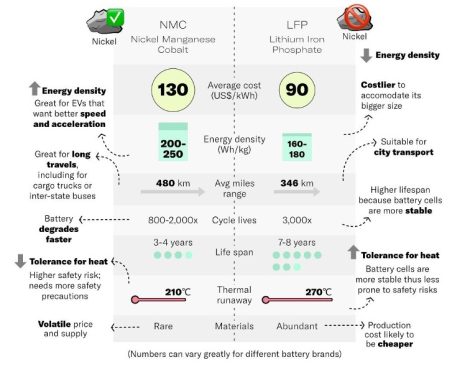
Credit: www.onecharge.biz
Future Prospects
As the demand for efficient energy storage grows, NMC and LFP batteries are in the spotlight. Both have unique advantages. Their future prospects hold significant interest for industries like automotive and renewable energy. Each offers potential benefits that could shape markets and technology.
Technological Advancements
NMC batteries excel in energy density. They promise longer-lasting power for devices and vehicles. This feature is crucial for electric cars, providing extended range. Recent advancements aim to enhance their lifespan, addressing concerns about durability.
LFP batteries stand out in safety and cost-effectiveness. They are less prone to overheating, making them ideal for sensitive applications. Innovation is focused on improving their energy density. This could make them more competitive against NMC in high-demand sectors.
Market Trends
The market shows a growing preference for sustainable solutions. NMC batteries are favored for their high energy output. Their popularity is strong in electric vehicles and portable electronics. Manufacturers invest in research to lower costs and improve performance.
LFP batteries are gaining traction due to affordability. Their application in solar energy systems and large-scale storage is increasing. As industries prioritize safety, LFP’s stability becomes more appealing. The market shift towards eco-friendly practices supports their growth.
Both battery types hold promising futures. They cater to different needs. The competition between them drives innovation and market expansion.
Frequently Asked Questions
Which Is Better Nmc Or Lfp Battery?
NMC batteries offer higher energy density, making them suitable for long-range applications. LFP batteries provide better safety and longer lifespan. Choose NMC for performance and range, while LFP is ideal for safety and durability. Your choice depends on your specific needs and priorities.
Is Tesla Powerwall Nmc Or Lfp?
Tesla Powerwall uses NMC (Nickel Manganese Cobalt) battery chemistry. This technology offers high energy density and long cycle life.
Why Are Ev Manufacturers Switching From Nmc To Lfp?
EV manufacturers are switching from NMC to LFP due to lower costs, better safety, and longer lifespan of LFP batteries.
What Is The Disadvantage Of An Nmc Battery?
NMC batteries have a shorter lifespan compared to other lithium-ion types. They can degrade faster under high temperatures. The cost is relatively high, impacting affordability for large-scale applications. Safety concerns exist due to potential thermal runaway. Recycling challenges arise from the complex material composition, affecting environmental sustainability.
Final Words
Choosing between NMC and LFP batteries depends on your needs. NMC batteries are known for energy density. They power devices longer. LFP batteries offer safety and longevity. They last through many charges. Consider your priorities. Energy or lifespan? Both options have benefits.
Your choice should match your device’s demands. Research and compare to decide wisely. Energy storage is vital today. Both NMC and LFP batteries serve important roles. Each has unique strengths. Understanding these can guide your decision. Stay informed and choose the best fit for your needs.


